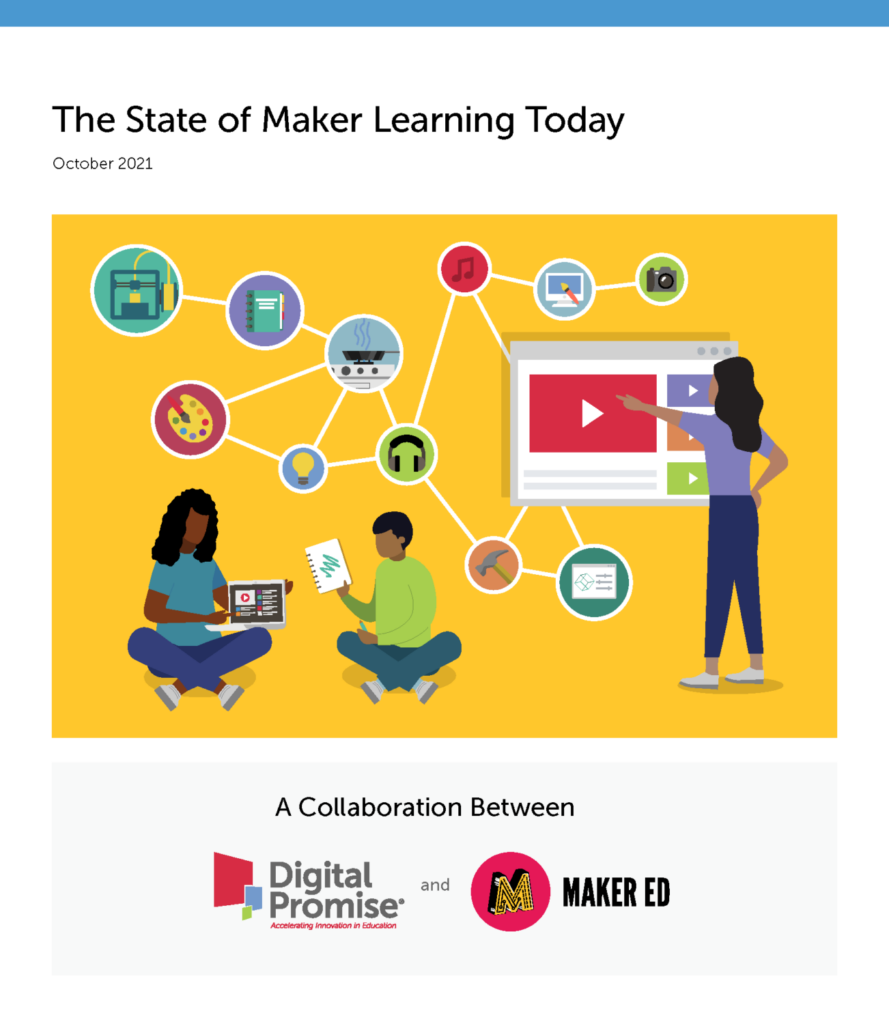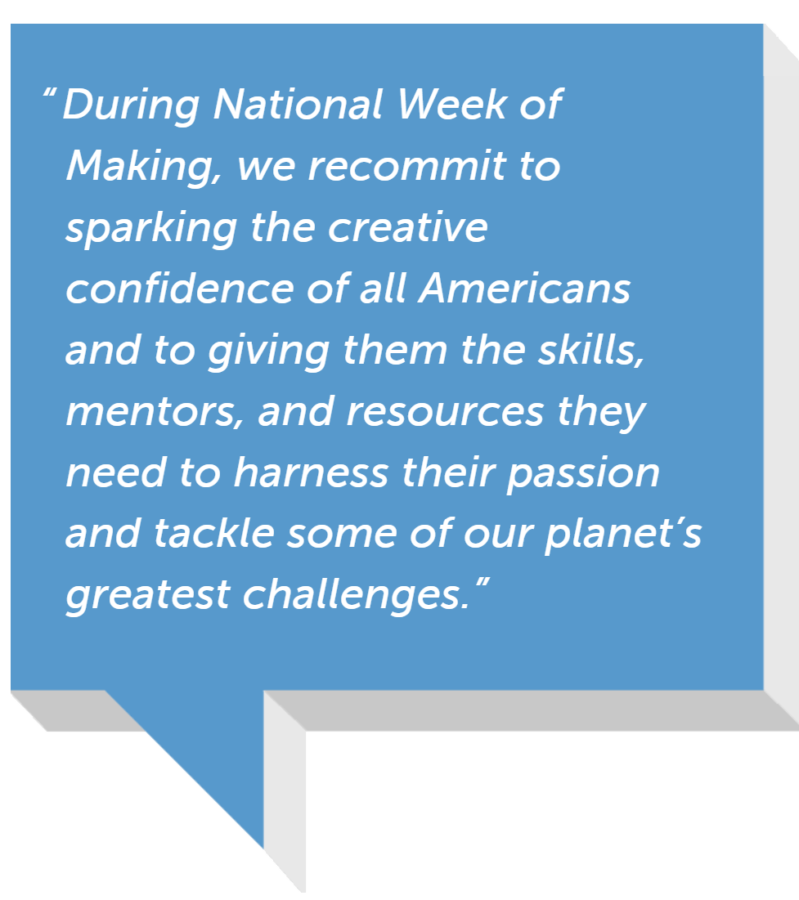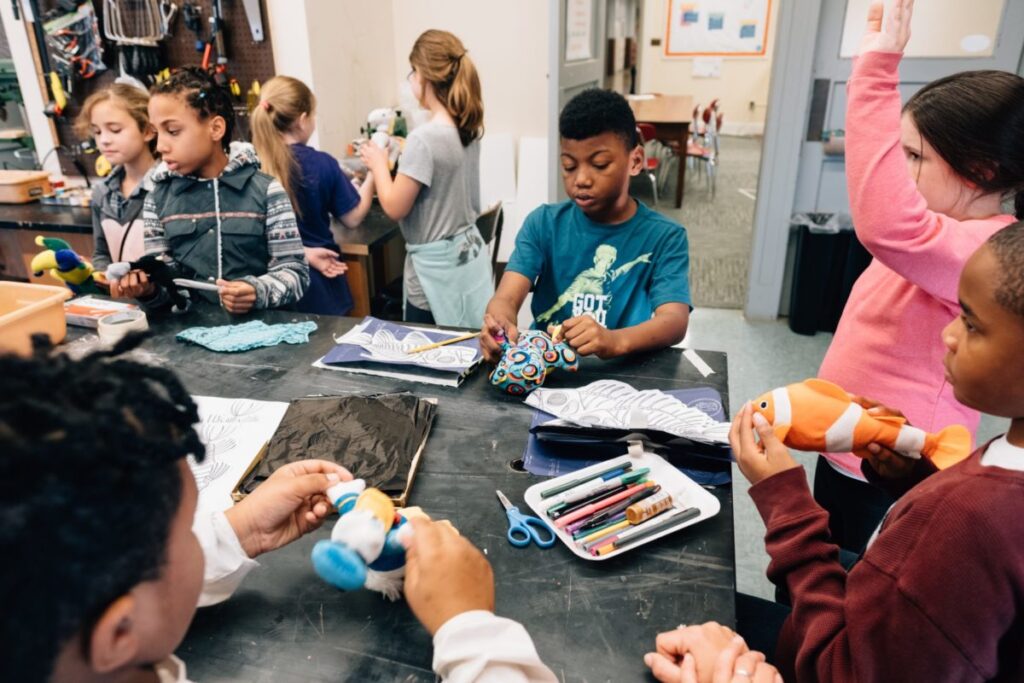In October 2021, five years after President Obama’s formal declaration of the National Week of Making, Digital Promise and Maker Ed published The State of Maker Learning Today, a collaborative report sharing the results from a national survey of educators throughout the United States. The report spotlights stories from the field and offers recommendations for the future of maker learning.
What do these national insights mean for maker learning in the greater Pittsburgh region? How can educators use them to bring greater impact, access, and equity to local students?
To answer these questions, Remake Learning’s Maker Learning Collaborative recently hosted a Lunch & Learn with regional stakeholders and broke down three key findings from the report:

Maker Learning Needs Clear, Inclusive Definitions
In order to sustain and grow maker learning opportunities, we must ensure the operational language we use is both clear and inclusive. Terms like “maker,” “maker educator,” and “maker learning” mean different things to different people. How do we define these terms in ways that are broad enough to be all-inclusive while simultaneously specific enough to carry meaning and weight in the conversations we have and the work we undertake? The next step in this work includes creating and amplifying shared definitions while showcasing diverse examples of what it means to identify as a maker and engage in making and maker learning.
Maker Educators Must Listen to, Learn From, and Work with Communities
Across the board, survey responses indicated many educators are struggling with connections between maker learning in their programs and their broader communities. We know that the school-family-community connection is integral to learners’ successes and that is no different when talking about maker learning.
To build stronger connections, Digital Promise and Maker Ed have found that we must break down silos and build inclusive, sustainable maker learning experiences across a “triad” of community sites, out-of-school time organizations, and K-12 institutions. The maker learning field must develop and implement robust, effective outreach strategies to better connect with and understand the needs of out-of-school-time organizations and the communities they serve.
We Need to Carry Forward Lessons Learned During the COVID-19 Pandemic
The COVID-19 pandemic created a demand for high-quality digital content existing outside of the traditional boundaries of physical space and scheduled time. Nearly 60% of respondents indicated they consider online professional learning a critical maker learning resource moving forward, as it allows educators to access content for their professional growth when and where it is convenient for them.
When creating instructional content for their students, 43% of respondents said they will continue offering at-home and community-based maker learning project guides for those they serve. Similarly, to support maker learning outside of traditional programming schedules, nearly 40% of educators surveyed stated they would continue offering facilitated virtual experiences and half of those surveyed indicated they would continue to record video content that can be accessed asynchronously.

Exploring The State of Maker Learning in the Greater Pittsburgh Region
Throughout the Lunch & Learn, it became clear that we must continue to examine how these national findings play out locally, as well as identify and address issues unique to the greater Pittsburgh region.
To that end, the Maker Learning Collaborative, in partnership with Digital Promise, is launching a regional survey to better understand the state of our maker learning ecosystem.
Once this data is collected, the Maker Learning Collaborative will convene a sub-committee to analyze and summarize the data, make recommendations, and set a course of action for the working group. For more information, please contact the Maker Learning Collaborative working group lead, Nick Schiner, at nschiner@digitalpromise.org.
Author: Nick Schiner, Lead of Maker Learning Collaborative
